Cooperative learning is a dynamic educational approach that emphasizes collaboration and active participation among students. By working together in small groups, students can enhance their understanding of subject matter, develop critical social skills, and foster a sense of community within the classroom. This article explores the top cooperative learning strategies that can transform classroom engagement and collaboration. From defining cooperative learning and its benefits to detailing key principles and effective activities, we provide comprehensive insights for educators and parents alike. Additionally, we delve into successful group formation techniques, the teacher’s role, assessment methods, common challenges, and future trends, all supported by real-world examples and case studies.
gameshoek.com offers a detailed exploration of this topic.
1. Definition and Benefits of Cooperative Learning
Cooperative learning is an instructional strategy where small groups of students work together on a common task, each member contributing to achieve shared academic goals. Unlike traditional learning environments, where individual effort and competition are emphasized, cooperative learning fosters mutual support and collective problem-solving. This approach is grounded in the belief that learning is inherently social and that students benefit from the diversity of perspectives within a group.
The benefits of cooperative learning are manifold. Academically, it has been shown to improve student achievement, retention, and understanding of material. Students engaged in cooperative learning tend to develop higher-order thinking skills and gain deeper insights into the subject matter. Socially, cooperative learning enhances communication, teamwork, and conflict resolution skills, preparing students for collaborative work environments. It also promotes a positive classroom atmosphere, as students build relationships and learn to appreciate diverse viewpoints. Additionally, cooperative learning can increase student motivation and engagement, as learners find value and relevance in their collaborative efforts. By creating a supportive and interactive learning environment, cooperative learning helps students become active participants in their own education.
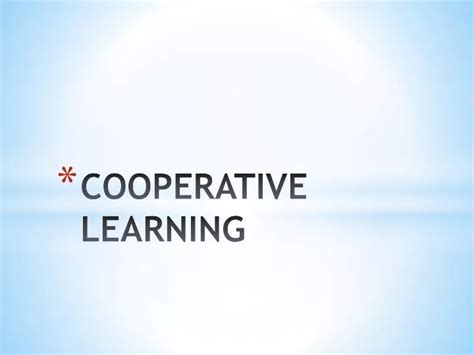
2. Key Principles of Cooperative Learning
Cooperative learning is built on several key principles that ensure its effectiveness in promoting student engagement and collaboration. The first principle is positive interdependence, where group members perceive that their success is linked to the success of others. This creates a sense of responsibility and encourages mutual support. Each member plays a unique role, contributing to the group’s overall goals.
Another fundamental principle is individual accountability. While the group works collectively, each student is accountable for their own contribution. This ensures that no one can coast on the efforts of others and that all members are equally invested in the learning process. Regular assessments and feedback help maintain this balance.
Face-to-face promotive interaction is essential, as it involves students engaging directly with one another to discuss and solve problems. This interaction fosters deeper understanding and the development of critical social skills. Cooperative learning also emphasizes the importance of social skills, such as communication, leadership, decision-making, and conflict resolution, which are explicitly taught and practiced.
Lastly, group processing involves regular reflection on group functioning, where students assess their collaborative efforts and identify areas for improvement. This self-assessment helps groups become more effective over time. By adhering to these principles, cooperative learning creates a structured and supportive environment conducive to both academic and personal growth.

3. Successful Group Formation Techniques
Successful group formation is a critical aspect of cooperative learning, as the composition of groups can significantly influence their effectiveness. One technique is to create heterogeneous groups that reflect a diverse mix of abilities, backgrounds, and perspectives. This diversity enriches the group’s problem-solving capacity and allows students to learn from one another.
Random assignment is another method, ensuring that groups are formed without bias and that students have the opportunity to work with different classmates. This can help break down social barriers and foster a more inclusive classroom environment. However, it is also beneficial to occasionally form groups based on specific criteria, such as interests or skills, to target particular learning objectives or projects.
Group size is important; typically, groups of four to six members are most effective. Smaller groups may lack sufficient diversity, while larger groups can become unwieldy and make it difficult for everyone to participate equally.
Clear roles and responsibilities should be assigned within each group to ensure that all members are actively engaged and understand their contributions to the group’s success. Regular monitoring and support from the teacher are also essential to help groups function smoothly and address any issues that arise. By thoughtfully forming groups, educators can enhance the cooperative learning experience and maximize student outcomes.
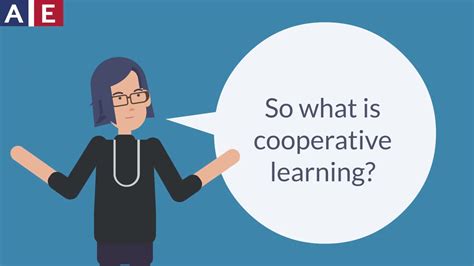
4. Effective Cooperative Learning Activities
Effective cooperative learning activities are designed to foster collaboration, critical thinking, and active engagement among students. One popular activity is the Jigsaw method, where each group member is assigned a different segment of the material to learn and then teach to their group. This ensures that each student becomes an expert in their area and that the entire group depends on each member’s knowledge.
Think-Pair-Share is another effective technique, which involves students thinking about a question individually, then discussing their ideas with a partner before sharing with the larger group. This method encourages individual accountability and promotes deeper understanding through discussion.
Group investigations involve students working together on a research project or inquiry-based task. This activity requires collaborative planning, division of labor, and synthesis of information, allowing students to develop both academic and social skills.
Role-playing and simulations can also be powerful cooperative learning activities, as they immerse students in real-world scenarios where they must work together to solve problems. These activities promote active learning and help students apply theoretical knowledge in practical situations.
By incorporating these and other cooperative learning activities, educators can create dynamic and engaging learning experiences that enhance student collaboration and achievement.
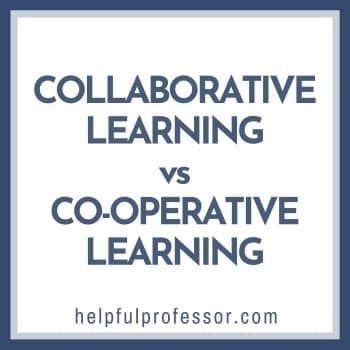
5. Role of the Teacher in Facilitating Cooperative Learning
The role of the teacher in facilitating cooperative learning is pivotal to its success. Teachers act as planners, organizers, and guides, ensuring that cooperative learning activities are structured effectively and aligned with learning objectives. Initially, teachers must carefully plan lessons that incorporate clear goals, well-defined tasks, and appropriate group formations.
During activities, teachers monitor and support student groups, offering guidance and assistance as needed without taking over the tasks. This balance encourages students to take ownership of their learning while providing them with the necessary support to stay on track. Teachers also play a critical role in teaching and reinforcing social skills, such as communication, conflict resolution, and teamwork, which are essential for effective collaboration.
Assessment is another crucial aspect of the teacher’s role. Teachers must employ a variety of assessment methods to evaluate both individual and group performance, ensuring that all students are contributing and benefiting from the cooperative learning experience. Regular feedback helps students understand their progress and areas for improvement.
Finally, teachers facilitate reflection and group processing by encouraging students to evaluate their own and their group’s performance, fostering a continuous cycle of improvement and learning. By fulfilling these roles, teachers can create a productive and supportive environment for cooperative learning.

6. Assessing and Evaluating Cooperative Learning Outcomes
Assessing and evaluating cooperative learning outcomes is crucial for ensuring that both academic and social goals are met. Effective assessment strategies involve a combination of individual and group evaluations. Teachers should use formative assessments, such as observations, quizzes, and reflections, to monitor ongoing progress and provide immediate feedback. These assessments help identify areas where students may need additional support or guidance.
Summative assessments, such as group projects, presentations, and written reports, allow for a comprehensive evaluation of the knowledge and skills acquired during the cooperative learning activity. It’s important to assess both the group’s final product and individual contributions to ensure accountability and fairness.
Peer assessments can also be valuable, as they provide insights into each student’s participation and collaboration from the perspective of their teammates. Self-assessments encourage students to reflect on their own performance and identify strengths and areas for improvement.
Rubrics are an effective tool for evaluating cooperative learning outcomes, as they provide clear criteria for both academic content and collaborative skills. By using a variety of assessment methods, teachers can gain a holistic understanding of student learning and ensure that cooperative learning activities are achieving their intended outcomes.
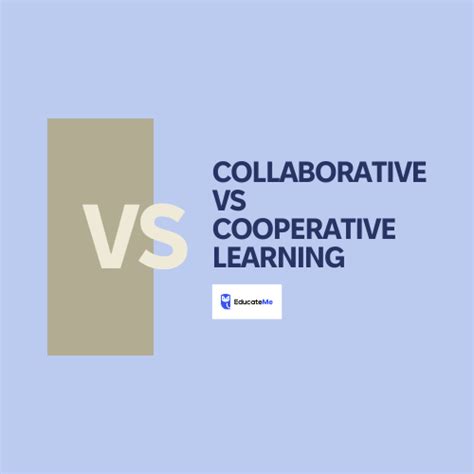
7. Overcoming Common Challenges in Cooperative Learning
Overcoming common challenges in cooperative learning requires proactive strategies and thoughtful intervention. One frequent challenge is unequal participation, where some students may dominate the discussion while others are passive. To address this, teachers can assign specific roles within groups to ensure balanced involvement and use structured activities that require contributions from all members.
Another challenge is managing diverse group dynamics, such as conflicts or differing work styles. Teachers can foster a positive environment by setting clear expectations for collaboration, teaching conflict resolution skills, and intervening when necessary to mediate disputes.
Students may also struggle with understanding their roles or the task itself. Providing clear instructions, regular check-ins, and scaffolded support can help clarify expectations and guide students through the process.
Finally, ensuring equitable assessment can be challenging. Using a combination of individual and group assessments, along with peer and self-evaluations, can provide a more accurate picture of each student’s contributions and learning outcomes. By addressing these challenges proactively, teachers can enhance the effectiveness of cooperative learning and support student success.
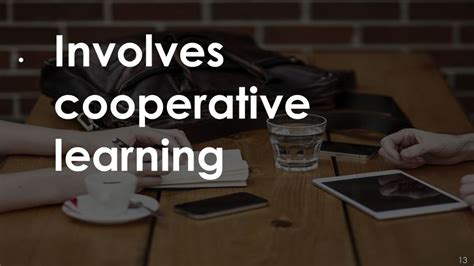
8. Case Studies and Real-World Examples
Case studies and real-world examples provide valuable insights into the practical application of cooperative learning strategies. For instance, a middle school in Illinois implemented the Jigsaw method in its history classes. Students were divided into groups, each responsible for researching a different historical figure. After gathering information, they regrouped to teach their peers about their assigned figures. This approach not only improved students’ understanding of the material but also fostered collaboration and presentation skills. Feedback from both students and teachers highlighted increased engagement and a deeper grasp of historical concepts.
Another example comes from a high school in California that used cooperative learning to address complex science projects. Students worked in teams to conduct experiments and analyze data. Each group member was assigned a specific role, such as researcher, data analyst, or presenter. This structure ensured that all students participated actively and developed a range of skills. Teachers reported that students demonstrated improved problem-solving abilities and enhanced teamwork.
These case studies illustrate how cooperative learning can be adapted to various educational contexts, enhancing both academic performance and social skills. By examining these real-world examples, educators can gain practical insights into effectively implementing cooperative learning strategies in their own classrooms.
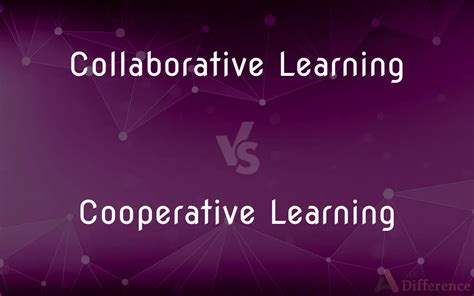
9. Future Trends and Innovations in Cooperative Learning
The future of cooperative learning is poised to be shaped by several emerging trends and innovations that enhance its effectiveness and accessibility. Technology integration is one significant trend, with digital tools and platforms facilitating virtual collaboration and interaction. Online collaborative tools, such as Google Workspace and educational apps, allow students to work together in real-time, regardless of physical location, expanding opportunities for cooperative learning beyond the traditional classroom.
Another innovation is the incorporation of gamification into cooperative learning activities. By integrating game-based elements, educators can increase engagement and motivation, making learning more interactive and enjoyable. Gamified tasks, such as team-based challenges and simulations, can enhance collaboration and problem-solving skills.
Additionally, the focus on personalized learning is influencing cooperative learning practices. Tailoring group activities to individual learning needs and preferences ensures that all students can contribute meaningfully.
Furthermore, there is growing interest in culturally responsive cooperative learning, which aims to address diverse cultural backgrounds and experiences within groups. This approach fosters inclusivity and enriches the learning experience by valuing and integrating different perspectives.
These trends and innovations are set to enhance cooperative learning, making it more dynamic, inclusive, and effective for future educational environments.
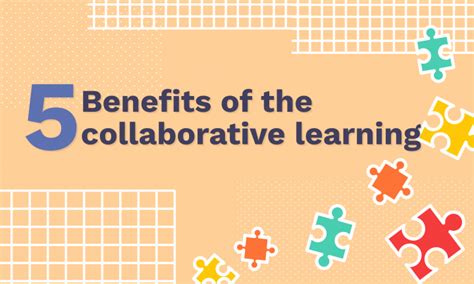
Cooperative learning is a powerful educational approach that fosters collaboration, enhances engagement, and develops critical social skills. By understanding its key principles, implementing effective activities, and addressing common challenges, educators can create a dynamic and supportive learning environment. The future of cooperative learning, enriched by technology, gamification, and personalized strategies, promises even greater opportunities for student growth and success. Embracing these practices and innovations will help educators and parents alike support and enhance the learning journey for all students.
gameshoek.com
